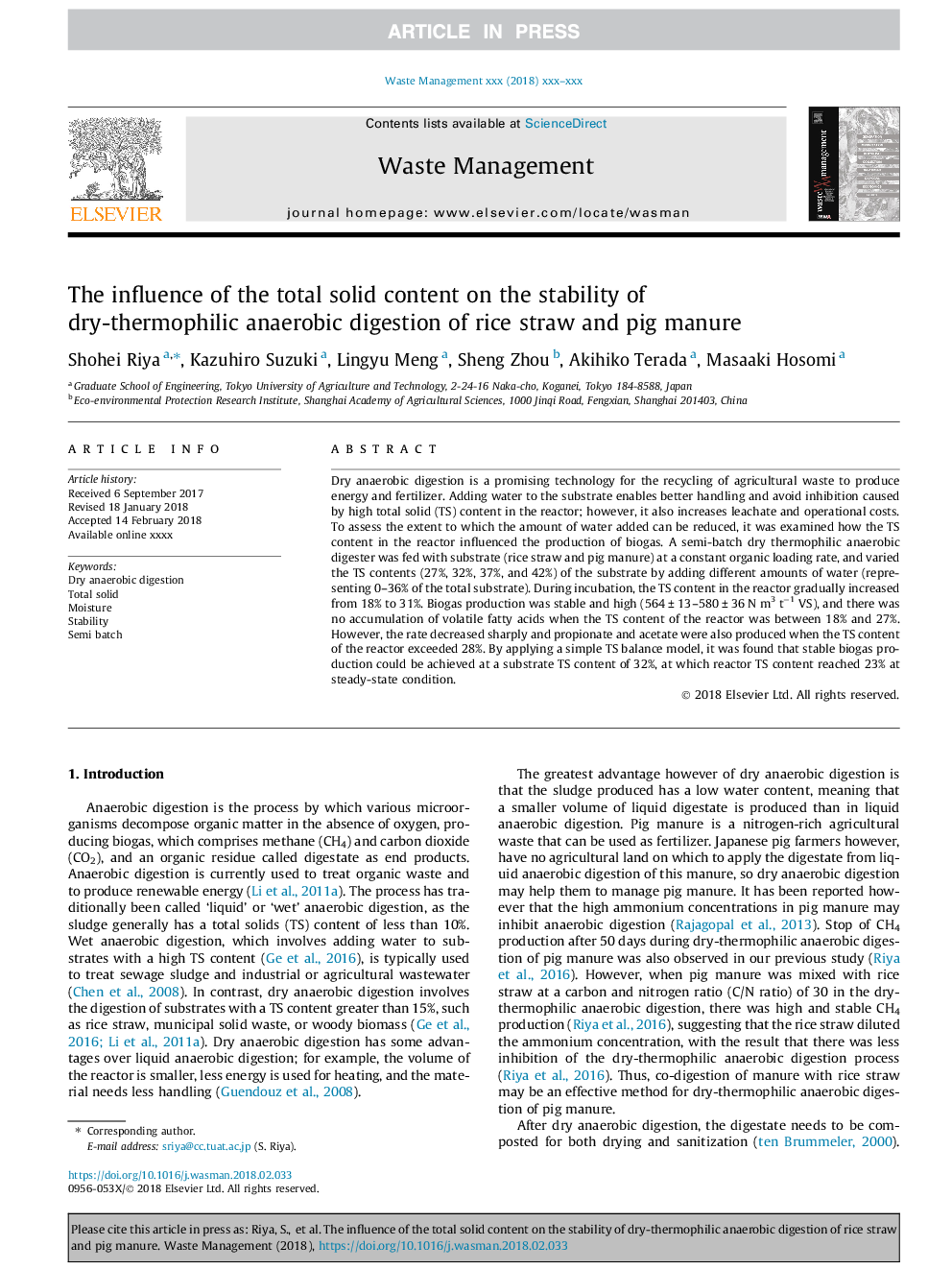| Article ID | Journal | Published Year | Pages | File Type |
|---|---|---|---|---|
| 8869653 | Waste Management | 2018 | 7 Pages |
Abstract
Dry anaerobic digestion is a promising technology for the recycling of agricultural waste to produce energy and fertilizer. Adding water to the substrate enables better handling and avoid inhibition caused by high total solid (TS) content in the reactor; however, it also increases leachate and operational costs. To assess the extent to which the amount of water added can be reduced, it was examined how the TS content in the reactor influenced the production of biogas. A semi-batch dry thermophilic anaerobic digester was fed with substrate (rice straw and pig manure) at a constant organic loading rate, and varied the TS contents (27%, 32%, 37%, and 42%) of the substrate by adding different amounts of water (representing 0-36% of the total substrate). During incubation, the TS content in the reactor gradually increased from 18% to 31%. Biogas production was stable and high (564â¯Â±â¯13-580â¯Â±â¯36â¯Nâ¯m3 tâ1 VS), and there was no accumulation of volatile fatty acids when the TS content of the reactor was between 18% and 27%. However, the rate decreased sharply and propionate and acetate were also produced when the TS content of the reactor exceeded 28%. By applying a simple TS balance model, it was found that stable biogas production could be achieved at a substrate TS content of 32%, at which reactor TS content reached 23% at steady-state condition.
Related Topics
Physical Sciences and Engineering
Earth and Planetary Sciences
Geotechnical Engineering and Engineering Geology
Authors
Shohei Riya, Kazuhiro Suzuki, Lingyu Meng, Sheng Zhou, Akihiko Terada, Masaaki Hosomi,
